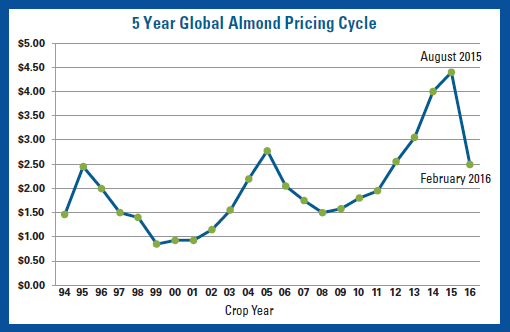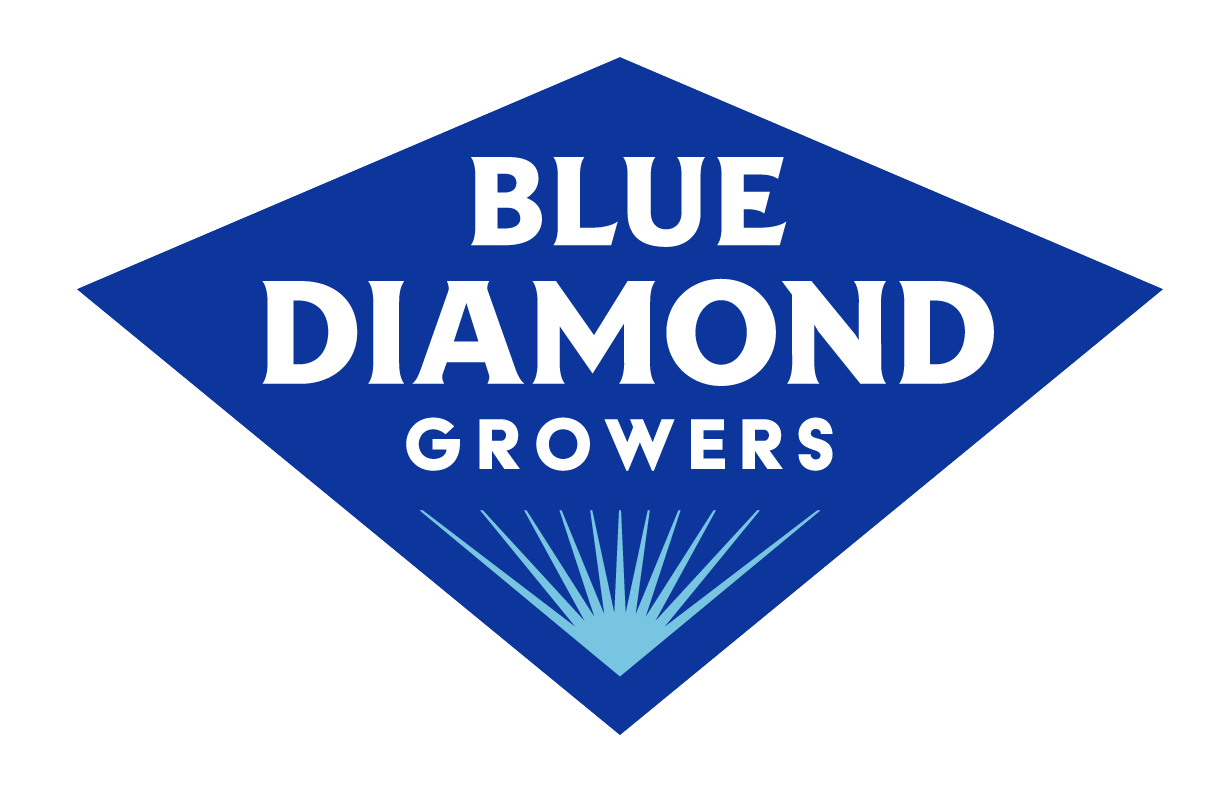Marketing Needed to Grow Demand
Much of the almond industry believes they are “marketing” almonds by letting their call pool handler inform its broker that they are ready to sell. Respectfully, this is confusing marketing with trading, which is no more than taking advantage of timing. Marketing is distinguished by understanding consumer needs, developing new products, building brands and collaborating with customers to generate profitable demand for almonds. Marketing is always an effective strategy, but there are times when a trading strategy can be nearly as effective. The industry just completed one of those eras when trading almonds was so profitable that it attracted many new entrants to the industry.

For more than six years, the market prices for almonds consistently rose, never selling for less than the previous year. As the drought suppressed yields, prices spiked. By last summer, almonds had become the most costly tree nut. It was a good time to strengthen balance sheets of growers and handlers.
As prices reached historically high levels, the industry experienced a reduction in market demand. In times of tight supplies, price is used to ration the available quantities. However, demand-erosion occurred and pricing had become over-inflated.
Blue Diamond’s strategic plans anticipated the 2015 crop to be the peak of almond prices over our five-year planning horizon. We forecasted an El Niño water year, combined with increasing acreage, would result in expectations for larger future crops and price changes.
The unexpected news of a healthy 2015 crop with a slight increase in market supply triggered the price decline. The speed of the price correction unsettled the market. Purchases were made at prices $1.50 above current market by the time the product reached the customer. When those customers needed to resell, they sometimes defaulted on those contracts leaving containers orphaned in port, searching for new customers. Later, they sold at discount to the already lower market prices, further contributing to the downward pricing spiral.
It seems counter-intuitive, but lowering prices reduced demand. This deflationary environment caused buyers to delay purchases and even reduce consumption. They knew that by waiting prices would go lower. Price stability or defining a floor to prices was necessary to give buyers the confidence to buy now.
As I write this article, it appears market prices have returned to the historically normal levels or similar to those of 2012. California growers, the most productive, efficient and sustainable in the world, are better positioned to maintain profitability at these economic levels, but other producing countries will be pressured to break-even. This gives us a platform from which to restore market confidence and rebuild demand.
Blue Diamond is a marketing co-op. Our business is almond demand generation. In the last five years we have tripled our advertising expenditures, continued to innovate new almond products, opened 45 international markets to our consumer brand and achieved two-thirds of our revenues through value-added products.
With the moderation in almond prices, Blue Diamond is doubling down on our marketing investments. We are debuting new Almond Breeze television advertising, committing to significant advertising for snack almonds during the Olympics and continuing to invest in new innovative products that will build our growers’ bottom line. Blue Diamond will continue driving market growth through innovative products and marketing, ensuring a strong future for our cooperative.
For more insight and recent news about Blue Diamond, visit the March/April 2016 Almond Facts issue.
